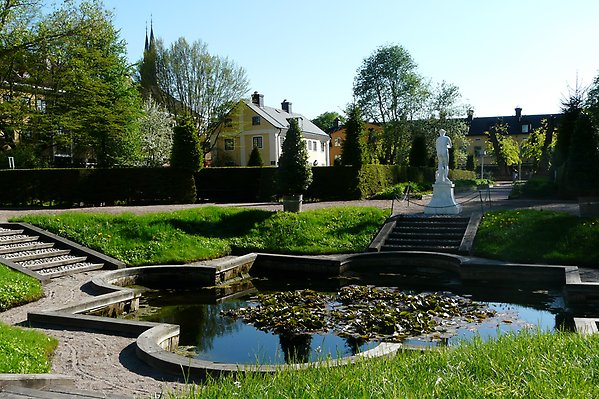History of the Linnaeus Garden

The Linnaeus Garden today. Photo: Lotta Saetre
Uppsala University's Botanical Garden is the oldest such garden in Sweden. It was created in 1655 on the initiative of Olof Rudbeck the Elder. Rudbeck was a professor of medicine, but at that time medicine and botany were included in the same field.
In Rudbeck’s era, the garden was located in the centre of Uppsala, in the Svartbäcken district near the Fyris river. In the garden, medical students could learn botany and study medicinal plants. Towards the end of the 17th century, there were more than 1,800 plant species in the garden. Many of them, such as potatoes, were grown for the very first time in Sweden.
.jpg)
Olof Rudbeck the Elder’s plan of the Botanical Garden located at Svartbäcksgatan in Uppsala (now known as the Linnaeus Garden). The sketch can be found at Uppsala University Library.
Olof Rudbeck's Botanical Garden was severely damaged during the great fire of Uppsala in 1702. As the University lacked the means to restore it, the garden fell into a period of neglect.
In 1741, Carl Linnaeus took over as director of the then dilapidated Academy Garden. He transformed it into one of the foremost gardens of the world. Through his strong network of global contacts, he was able to bring together thousands of plants. They were cultivated in a special order established by Linnaeus, according to their reproductive system or in organic plantations.
Later, the Botanical Garden moved to the area near the castle where it is still located today. The old garden then became parkland and potato fields. The Orangery was rebuilt into a student nation and Director Musices moved into the head of department’s residence.
When the Swedish Linnaeus Society was founded in 1917, it considered one of its main tasks to be the restoration of Linnaeus’s botanical garden. This has been possible thanks to Linnaeus’ accuracy in his detailed plant classifications and diagrams.
The former head of department’s residence has now been transformed into the Linnaeus Museum and is run by the Swedish Linnaeus Society. Uppsala University has taken over responsibility for the garden itself, which is now called the Linnaeus Garden.
